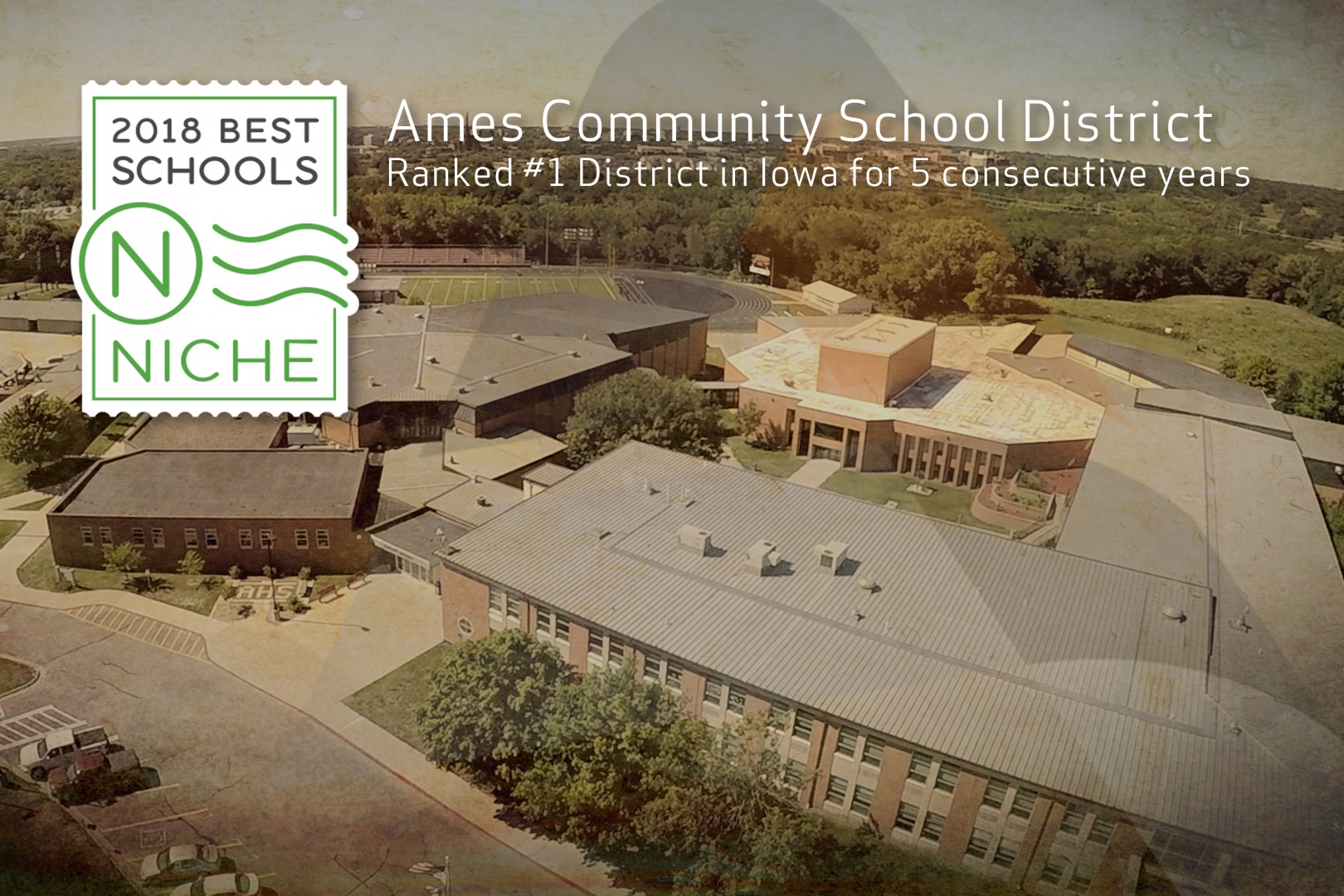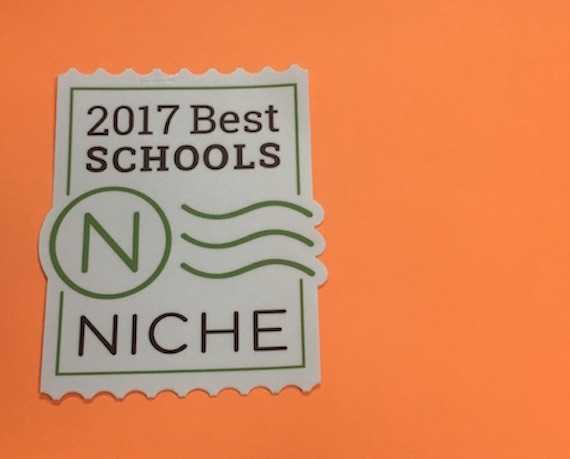

An Emphasis on Attendance
Student attendance is an important predictor of success in the classroom. Only through attendance and class participation do students achieve the benefits of our education program within the Ames Community School District. Learning lost due to an absence can have a profound effect throughout the school year, and we are placing a greater emphasis on communicating absences with parents this school year. Our previous attendance policy stated that communications would be sent home after 10 absences. The board supported a proactive approach to addressing chronic absenteeism and on August 21, revised the attendance policy to the following:
Read more
Tackling the Racial Disparity Gap: Step One
On May 25, 2017, the School Improvement Advisory Committee (SIAC) met to discuss the 2016-17 goals recommended by District content teams, and reviewed and analyzed the 2017 Iowa Assessment Data. They recommended District goals based on this data, that we, as a District, are required to report in our Annual Progress Report (APR) to the Iowa Department of Education. During the analysis of subgroup data, SIAC uncovered with quantitative evidence that African-American students were underperforming compared to all other subgroups. Dan Andrews, the Data, Assessment and Program Evaluation Coordinator for the District, presented these findings at the July 17 school board meeting. The achievement gap is considerable and much more than a statistical anomaly: a 28.11 percentage point gap in reading, 33.73 percentage points in science, and 33.91 percentage points in mathematics. This kind of achievement gap is not unique to the Ames community. In fact, African-American students are underperforming white students across the United States on high stakes standardized tests. In the past couple years, this achievement gap has become a topic in national publications like The Atlantic, U.S. News, and CNN, among many others, where the articles cite studies and show graphs similar to what the SIAC team reviewed. The authors talk about how students in the same building do not receive the same education, or have access to the same academic opportunities, and they call for schools to become agents of change and reform. We agree and believe we can do better in the Ames Community School District. The difference with the SIAC data compared with those in the national publications is that the SIAC numbers reflect students within the Ames community. Those numbers, and more importantly, those students, can be directly impacted within our buildings.
Read more
Ames CSD Ranked #1 again by Niche
On August 7, Niche released their 2018 K-12 Rankings of the best schools in the country. For the fifth consecutive year, the…
Read more
Little Cyclone Teacher Academy
During the week of August 7-11, teachers from every building, 135 in total and nearly 40% of our teaching staff, voluntarily participated in the Little Cyclone Teacher Academy at the Ames High School. The week long Academy offered a variety of courses to teachers, allowing them to select from professional development opportunities that they would want to focus on. Examples of the courses included Differentiation for all Learners, Calibrating Conversations, Incorporating Technology into a Gradual Release of Responsibility, Advocacy: a Counter Narrative, Twice Exceptional Learners, and many more. The courses were primarily led by Teacher Leaders in the District, a few administrators, along with Area Education Agency (AEA) staff. It was a great way for teachers to get back into the swing of things, collaborate with colleagues, and brainstorm about the upcoming school year. On Thursday of that week, the entire group participated in a PLC Workshop led by Jack Balderman from Solution Tree. He provided practical ways to effectively implement the professional learning community (PLC) process in their buildings, with a focus on developing strategies to make it as authentic and useful as possible.
Read more
A Guide to Understanding the Physical Plant and Equipment Levy (PPEL)
https://www.youtube.com/watch?v=PoCPQoXCSsQ&feature=youtu.be What is the Physical Plant and Equipment Levy? The Physical Plant and Equipment Levy (PPEL), pronounced “pepple” in school jargon, is one of the most important sources of revenue for public school systems. It is a voter-approved tax of $1.34/$1,000 on property valuation of home and commercial property owners. For the Ames Community School District, this combined with a board approved option creates about $4 million annually. What can the money be used for? The $4 million are categorical funds that can only be used for specific purposes as it relates to building and grounds upkeep and repairs, new construction, technology (our 1:1 program for computers in every student’s hands), and equipment such as vehicles, maintenance equipment, furniture, and even large musical instruments for the band and orchestra program. The money cannot be used to pay teacher salaries, to fund student programs, or pay for utilities. Why is it important? Without the PPEL funds, many things that keep the District running would need to be paid for out of the District’s general fund, which also covers teacher salaries and programs for kids. Those are the things that are essential to educating students! It would mean making decisions to reduce staff and student programs by $4 million each year to take care of our physical plant and equipment needs.
Read more
New Chromebooks Support 1:1 Computer Initiative
Shipments of new Acer Chromebooks started pouring into the District Office at the end of July, continuing the Ames Community School District’s commitment to its 1:1 computer initiative that began in 2013. The goals of the initiative are wide ranging, and has a huge impact no students within the classroom and beyond. Students learn 21st Century skills, are able to create and collaborate using digital tools, and teachers are able to personalized learning centered around the individual needs of their students. One of the most significant aspects of the 1:1 initiative is that eliminates the digital divide by putting a computer in every student’s hands. Technology Director, Karl Hehr, has led the 1:1 initiative and sees it as a game changer in the Ames School District. “We can put a device in every student’s hands, regardless of their background, and give them access to learning beyond the classroom. They are then able to explore passions on their own, and this has created areas where students can become lifelong learners.”
Read moreSchool meal price policy FAQs
The Ames Community School Board on June 5, 2017 carved into a separate policy its procedures for dealing with unpaid meal account balances, which had been in place since 2015. However, the Board plans to revisit the policy to find a long-term solution. Watch this page for updates. FAQs Why is the School Board acting on an Unpaid Meal Policy? The USDA is requiring all school districts nationwide to have a policy in place by July 1, 2017 that details the procedures for unpaid meals. The Board approved unpaid meal procedures in June 2015 as part of another policy after the school district began to run large lunch account deficits, including $109,473 in the 2015 fiscal year. Since then, the negligent balances have fallen by more than $60,000. The Board drafted a separate policy in 2017 to meet the new USDA requirements. On June 5, 2017, the Board approved Policy 710.4 Meal & Snack Charges. How do families know if they qualify for free or reduced school meal? The district provides access to the application for free or reduced price school meals each year with other annual notices, and to all new families who enroll students in the district. When applications are processed, the district notifies families about their qualification status. Income guidelines are established by the US Department of Agriculture (USDA). Students who qualify for reduced meals are charged the difference between the federal reimbursement for free meals and reduced meals, which is currently 40 cents. To determine the price a school district must charge students don’t qualify for free or reduced price school meals, the USDA has established a formula through its Paid Lunch Equity Tool.
Read moreDistrict halts email phishing attempt
Recently an Ames Community School District email account was compromised and used to send out thousands of phishing-type emails that contained attachments that do not…
Read more
Our message to all students: You belong here
The Ames Community School District is working to support students and families who may be impacted by the executive orders banning immigration from certain countries.
Read more
NICHE.com ranks Ames best school district in Iowa again
For the third year in a row, NICHE.com has ranked Ames Community School District the best school district in Iowa. The composite ranking includes No. 1…
Read moreDiscover More from Ames CSD
